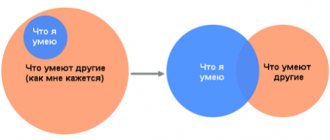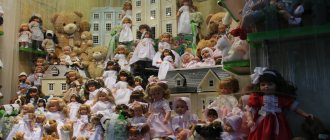According to the definition, ornithophobia is a special case of zoophobia (phobia of any animals, reptiles, insects, etc.) is a fear of birds. Moreover, ornithophobia is afraid not only of birds, but even of their feathers and voices. Considering that birds can be found not only in the forest, but also in any metropolis, people suffering from ornithophobia are forced to endure a lot of suffering due to their peculiarity. Fear of birds, as ornithophobia is called in everyday life, can make you give up walking and even working outside the home.
Ornithophobes feel discomfort when a bird appears in their field of vision. Therefore, they try to avoid parks, squares, ponds where there may be seagulls and ducks, as well as other places where they can see the object of their phobia. An ornithophobe may also experience a fear of flying birds.
The voices of birds, the rustling of their wings, even the sight of a fallen feather cause anxiety. However, an ornithophobe experiences maximum horror at the thought that a bird might touch him. It is interesting that fear is caused not only by living birds, but also by dead ones, as well as stuffed animals and images of birds.
Most people treat birds with loyalty, and even love. Therefore, the fear of birds is incomprehensible to many, and most likely, to those around the ornithophobe, his fears seem “abnormal.” “What’s so scary about birds?” - These are the questions he often hears from others. However, fear of birds is quite common and, for many, an everyday occurrence. The following stories, told by ornithophobes at an appointment with a psychologist, clearly prove: fear of birds easily develops in everyday life, it can appear in absolutely any person due to certain circumstances.
Example 1.
I am very afraid of pigeons and try to avoid meeting them. It is these birds that cause me panic fear and a terrible feeling of disgust: for me they are like flying rats - carriers of dirt and infections. The panic is simply unaccountable: I am not able to control it. I used to get scared only when a dove flies past. Now everything has worsened: it annoys me, even if I see them in the park peacefully pecking food on the asphalt. Photos and videos with the presence of pigeons also began to cause disgust.
Example 2.
I have a fear of any flying birds, almost to the point of hysteria. It all started when the window panes in our entrance were broken a few years ago. The birds flew freely. You come home, and they rush around the entrance above your head. I became so afraid of them (especially of collisions with them)! Before entering the entrance, I asked my husband to drive out these flying creatures. Only after that could I calmly go home.
Here is a clear example of ornithophobia. So, we see that some specific situation or association may well form a persistent, progressive fear of birds. However, there are many other reasons.
Causes
The strength of fear does not depend on age, so strong fear appears in adults and children.
Causes of phobia:
- Heredity. A person may inherit a phobia from their parents. If there is a person in the family who cannot overcome himself, having a fear of birds, then the baby will copy the behavioral program of fear on a subconscious level.
- Unsuccessful contact with the bird. In childhood, an unpleasant situation could occur with geese or turkeys that chased a child, or with a pet parrot that bit the baby.
- Impressions from a film or television show.
- Physiological problems associated with the functioning of the vestibular system. Any movement of the bird or its flight can cause a feeling of anxiety, as well as dizziness and even nausea.
This rarely goes away on its own. About 90% of people suffering from ornithophobia are unable to regain peace of mind on their own, so they turn to specialists for help.
How to get rid of ornithophobia?
Living with ornithophobia is not easy. After all, a person experiences anxiety at the sight of sparrows, tits and pigeons, which can be seen every day on the streets of any city. In severe cases, an ornithophobe may refuse to leave the house for fear of encountering a bird. Naturally, a phobia seriously affects the quality of life.
Modern psychotherapeutic techniques can effectively get rid of ornithophobia. True, this may require many months of work on yourself.
Manifestation of phobia
The main symptoms of ornithophobia include:
- irrational anxiety that arises at the sight of birds, feathers and images of birds;
- tachycardia;
- weakness and dizziness;
- severe trembling that appears when a bird appears in close proximity to the ornithophobe.
Fighting methods
Treatments for a fear of birds are not very different from standard treatments for other mental disorders associated with phobias.
| Action | Characteristic |
| Step 1 | The situation after which a person developed fear is analyzed in the smallest details and details. The specialist finds out the sequence of events, which will make it possible to find the root cause of the fear. |
| Step 2 | The psychologist asks the patient to reproduce in pictures the emotions and feelings that they experienced while communicating with the birds. |
| Step 3 | Assessing the objectivity of experiences. If a psychological trauma occurred in childhood, then by discussing it from the position of an adult, one can understand that the emotions that the patient felt as a child are so insignificant that he will be able to get rid of fear on his own. |
Visit to a psychologist
You need to learn to “manage” your phobia:
- To do this, you can conduct a small study that will be aimed at studying the life of birds. The more interesting and positive information an ornithophobe learns about them, the more comfortable he will be able to feel in their environment.
- Modern audio and video technologies also provide the opportunity to listen to sounds made by different representatives of the fauna. A comfortable home environment at home will allow you to gradually get used to birdsong.
- Bird contact. As you get used to the object, you can try to get closer and touch the birds. Gradually, a person adapts, getting rid of fears of bird bites.
Specialist help
Treatment of any phobia is carried out with the help of a person’s independent struggle with his fears. The psychotherapist can only give the sufferer the necessary mood and give certain instructions. But before starting therapy, a specialist must establish the main cause of this mental state and assess the strength of the influence of negative emotions on a person. After all, it is the patient’s own thoughts that put the patient into a stupor, causing a panic attack and other symptoms.
When meeting with a patient, the doctor learns from the patient about his fears, listens to stories from the past that led to the appearance of symptoms of a phobia, etc.
A specialist can even simulate a situation of meeting with an object of fear in order to understand its strength. Only after this can the doctor begin therapy.
The task of a psychotherapist is to teach a person to control his fear and find ways to suppress it. In many ways, therapy is based on a person’s meeting with the object of his fear. You don't need to go to the zoo or other place for this. You can also do this at home:
According to experts, a person should get used to birds in just a few days. After he himself feels relief, you can go outside. The next step is a real meeting with the threat. If it has brought the desired effect, and the person is no longer subject to his fears, the struggle has been a success. You can check for signs of a phobia by going to a pet store, where a person can get as close as possible to the bird.
Positive Attitudes
Knowing that the birds can do no harm can be considered a victory. A person understands that birds do not have bloodthirsty or carnivorous intentions towards. Rather, on the contrary, representatives of the fauna are afraid of humans and behave extremely carefully around them.
For some, fear borders on complete disgust. To get rid of this feeling, you can look at a photo or video of birds with beautiful feathers.
Taking an active position will help you get rid of the role of victim.
Sparrow
There is an opinion that the bird is named “sparrow” because of its habit of taking food from other birds and stealing it from people (from the consonant expression “beat the thief”). This opinion has a right to exist, but still belongs to the category of popular interpretation.
Sparrow
Researchers have two points of view on the origin of the word “sparrow”. According to the first, it is the ancient Slavic word “gorobets” that changed over time, which meant “pockmarked”.
According to the second, the word has an onomatopoeic basis. That is, people named birds depending on the sounds they made. The non-extant word "vork" is thought to be the basis for sound-related words such as "growl", "coo", and "sparrow".
Signs
There are many bad omens associated with the cursed bird. If it flies over your head with a chirp, it means bad luck; if it ends up in a house, Satan has sent for the soul of the person living there. Any encounter with it during the period of “sparrow nights”, of which there are several during the summer, is considered a particularly bad sign.
This is the period when the mountain ash blossoms and its berries ripen, the nights of Ivan Kupala, Petrov and Ilyin's days, as well as on the first of September.
“Sparrow Night” is a night with a thunderstorm, a hurricane, and lightning; it’s the time for evil spirits to run rampant. Sparrows, according to folk legends, flock to a place where they are measured by the devil himself or an evil spirit.
If a bird exceeds the standard, it lets it breed and harm people; if it turns out to be small, it drags it away into hell.
Sparrow
- If a sparrow has made a nest on the roof of a house, it means that marriageable brides should expect grooms soon.
- If sparrows carry branches and build a nest in the morning, there will be no rain until the evening.
- On a winter morning, the sparrows chirped loudly - there will be snowfall.
- In winter, sparrows begin to pick up feathers; expect severe frosts.
- Before a storm or blizzard, sparrows hide in brushwood or under the roof of a house.
- The low flight of a sparrow over the ground means the approach of rain.
- A sparrow flying into a house will bring some trouble with it.
- If a sparrow entered the house through an open window, one of the close relatives will soon die.
- A sparrow hitting the glass of a window also does not bode well.
- If sparrows flock together and chirp loudly, expect heavy rain in three days.
- The loud chirping of a sparrow in spring means the arrival of a thaw.
- Trouble awaits if you see a dead sparrow by the road or kill the bird yourself. Bad news will come from your friends.
- But seeing a sparrow in a dream, on the contrary, is good. You should expect joyful events, pleasant news, victories in love games or meeting a loved one.
Interesting Facts
It is also worth talking about why pigeons walk and sparrows jump. With the latter, however, everything is clear. What about pigeons? It is worth turning again to proportionality. The pigeon's tail is smaller and lighter than its body. Therefore, it is more convenient for him to move at a walk.
These birds also have a long knee joint, which makes them unable to “jump.” But they can do it. You can watch a pigeon jumping from the road onto the sidewalk of the pedestrian area. It’s easy to come across such a sight – literally in every yard.
And if you look closely, you will notice that before making a jump, the bird “squats” slightly in order to better push off the ground. She does not do this as easily as her younger brother. And finally, it’s worth talking about which birds jump like a sparrow. They are tits and redstarts.
The first of those listed are very similar in size to sparrows. Redstarts are very tiny - their length is only 10 cm. So they have practically no weight, and the structure is the same as that of a sparrow. Therefore, in this regard, everything is again determined by biology. By the way, magpies can also move in “jumps.”
Their length can reach half a meter, and their weight is about 200-230 grams. But again, her body is proportional. And magpies usually start jumping if they want to speed up.
Proverbs and sayings about the sparrow
- The owl is godfather, the sparrow is son-in-law.
- The sparrow takes the burden as best he can.
- A sparrow in the hands is better than a pie in the sky.
- The thief sparrow is a homebody, but people don’t praise him.
- The sparrow thinks only about the millet field.
- A sparrow in the hands is better than the promised peacock.
- A sparrow will not forget how to jump until it is a hundred years old.
- The sparrow neither sows nor reaps, but pecks the grain.
- The sparrow immediately takes off, but the rook needs a run.
- A sparrow caught in the sea turns into a mollusk.
- Looking at the wagtail, the sparrow began to dance.
- Fighting sparrows are not afraid of humans.
- The millet was eaten by a sparrow, and the quail is to blame.
- He doesn’t even need a salary, just let him feed the government sparrow.
- If a cat had wings, sparrows would not live.
- At lunch there is a nightingale, and after lunch there is a sparrow.
- For a hare, a sparrow, and a third child, there is no worse life in the world.
- A well-known proverb about a sparrow - And the sparrow chirps at the cat.
- Show the fig out of your pocket.
- You can't take a sparrow's heart.
- Doesn't recognize turkeys from sparrows.
- No matter how you feed a sparrow, it will not become as big as a batman.
- What benefit do many owls have from one sparrow?
- A drop - there is no breath for the sparrow, but the stone is chiseling.
- When the sparrow sees the wheat, he does not notice the trap.
- When there are hundreds of sparrows, they can even peck out the eyes of a tiger.
- He who is afraid of sparrows does not sow millet.
- The word is not a sparrow; if it flies out, you can’t catch it.
- The word is not a sparrow: if it flies out, expect trouble.
- Shoot sparrows from a cannon.
Why is the sparrow knocking on the window?
Sparrows and other city birds often fly to our windowsills and knock on the glass with their beaks. There is a sign associated with this: a sparrow knocking on the window means that soon someone will die in this home.
The folk interpretation of this phenomenon is interesting. Previously, windows were considered gateways to the afterlife, because during funerals the coffin was carried out through the window.
When birds knock on the window, these are the souls of the dead reminding of themselves, and it is possible that they came for the living.
Sparrow
Of course, there is a logical explanation for this behavior of the sparrow. Why is the sparrow knocking on the window? Because he wants to get inside. In autumn or winter, it’s dark and cold outside, but light shines through the curtains and you feel the warmth from the room, so the sparrows try to get into the house to warm up and eat.
Sparrows are quite smart birds, they understand perfectly well that there is food in a human home - if a feathered thief has at least once helped himself to leftover food from the kitchen table, he will continue to try to get inside in order to steal something.
He will teach this to others too.
But for all its ingenuity, the sparrow does not understand what glass is, and why it sees everything, but cannot get inside - so it pokes its beak at the window, trying to overcome the invisible barrier again and again.
Source: https://www.zooclub.ru https://pogovorki-poslovicy.ru
Source: https://xn—-7sbabjjc5c6aaaw0e.xn--p1ai/vorobej/
Sarah Paulson: Fear of Hole Clusters
Do tiny holes make you squeamish? Sarah Paulson can't stand them either. Trypophobia can cause many different feelings, and Sarah Paulson knows all about it.
After the actress told her friend Ryan Murphy (creator of AHS) about her fears, he based Season 7 of AHS: Cult on Paulson's real-life phobias.
But if it seems to the average person that one such phobia is not enough, then here’s another one for you. The actress also has a fear of clowns. This condition is called coulrophobia.
Scarlett Johansson: fear of birds
Scarlett Johansson is afraid of birds, but it turns out that she has inherited her mental disorder. It is known that many people are faced with the aggressive behavior of seagulls, which literally snatch food out of their hands. This situation can frighten anyone, especially children. But for some, like Scarlett Johansson, this bird behavior causes real panic and fear of flapping wings and sharp beaks.
Ornithophobia is the actual name of a mental disorder when a person is afraid of birds. The condition can develop after a negative encounter, but in some cases it can even be inherited. This phobia can be passed on from parents or other close relatives.
A black couple gave birth to an unusual boy. Today he has grown noticeably (photo)
Leo and Taurus. The union of these zodiac signs is special - they are connected karmically
Amazing photos of famous tourist spots before and during the pandemic
Luckily for Johansson, when she starred in the comedy-drama We Bought a Zoo, she had no fear of animals. She is only afraid of birds.
“I'm only afraid of birds. There is something so terrible about those flapping wings and sharp beaks. I'm terrified of them. It still hasn't gone away. If they asked me to put the bird on my shoulder, of course I would do it, but it would be difficult,” Johansson admits in an interview with Cosmopolitan.
Why do pigeons walk and sparrows jump? Description, photo and video
Why do pigeons walk and sparrows jump?
If a dove is in the sky, it is said to be flying. The same expression is used in relation to the sparrow. But if you look closely at how these birds move on the ground, you will notice differences. The dove walks, the sparrow jumps. There is a completely scientific explanation for this fact: you just need to analyze two aspects.
Sparrows and pigeons - facts
The most famous of man's feathered neighbors is the house sparrow. There is also a field one and about a dozen other varieties. The habitat of these small gray birds is all continents.
It wasn't always like this. Initially, sparrows lived only in Northern Europe. Then the habitat area became wider - almost the entire continent of Eurasia, eastern and northern Africa, the island of Java, regions of Asia Minor, the Arabian Peninsula. In the 20th century, birds of this species were brought to other countries, so now sparrows are found everywhere.
Male house sparrow
The exception is the Arctic and Antarctica. But in the mouths of the Pechora, in the north of Yakutia, it is quite possible to find them. The climate did not become an obstacle: the birds followed the man. Pigeons are also common on five continents. The genus has 35 species: speckled, brown, black, Himalayan, etc.
Even 5,000 years ago, the wild gray was tamed by man. Now more than 800 domestic breeds have been bred, including for meat. Birds were previously used as a means of communication - sending mail. Another option for using birds is in aerial photography.
Interesting:
The most dangerous lizards in the world - list, description, photos and videos
Why do pigeons walk and sparrows jump?
If you compare a dove and a sparrow, it immediately becomes clear that the first is much larger than the second. The difference in weight and size is striking. In terms of grams, it will be 25-30 versus 265-380, that is, the pigeon weighs no less than 10 times more than the sparrow.
This is one of the factors why birds move on the ground in different ways. Scientists say that it is simply difficult for a pigeon to jump, so it walks sedately on a flat surface. Even the wind helps the little gray sparrow move. It's like he's urging a bird on.
Size does not always determine how to move on land. The magpie, for example, jumps and is similar in size to a pigeon. Proportionality also plays a role. The ratio of body and tail sizes in a sparrow is equivalent. Pigeons have a tail that is smaller than their body, which makes jumping inconvenient. If the bird is going to follow the example of its smaller brother, it will “squat,” as it were.
The structure of the paws contributes to the difference in movement. In sparrows they are short and move simultaneously (the so-called paired muscle is responsible for this). Walking with birds is very difficult because it is impossible to maintain balance.
Pigeons have feet with a long knee joint. This structure makes it difficult to move by jumping, but does not exclude it as a method of movement. Therefore, it is quite possible to see pigeons “jumping” or preparing for such an action. Lifestyle
Interesting:
Why do wolves howl at the moon? Reasons, description, photos and videos
Science also explains the method of movement on earth by such factors as habitats. If birds have to spend most of their time in the crowns of trees and on the branches of bushes, then they jump on them. It is not difficult to see a sparrow somewhere on an apple tree in the garden. And when the bird finds itself on the ground, it still continues to move in small jumps.
Sandra Bullock: Fear of flying
Sandra Bullock doesn't like to fly, but she does it anyway. Nowadays, any transport is available. But it is an airplane flight that makes travel fast and comfortable. However, quite often the news talks about plane crashes and disappearances. Such news is frightening and annoying, especially when a person is planning his next vacation. But, according to statistics, most people are much more likely to die from a lightning strike than to be in a plane crash. Of course, such information is not always able to reassure you before a flight.
Meet me in Vancouver: Supernatural season 15 resumes filming
How can you use yeast to increase your yield? Recipes for tomatoes and potatoes
Belle's song characterizes Sagittarius: Disney songs for every zodiac
Aerophobia is believed by psychologists to affect one in ten people. Women suffer from this fear more often than men.
Sandra Bullock has always hated flying. However, Dr. Ryan Stone's role in the film Gravity changed the situation. The drama is set in space, and Bullock was told she would have to try out a special simulator called the Vomit Comet. The name itself no longer evokes pleasant sensations. But the filmmakers needed to reproduce antigravity in such a way that the viewer would believe in its authenticity.
In an interview with Vogue, the actress admitted: “I was literally petrified from the flight. Falling from the sky was not my dream, but I always wanted to work with Alfonso Cuaron."









